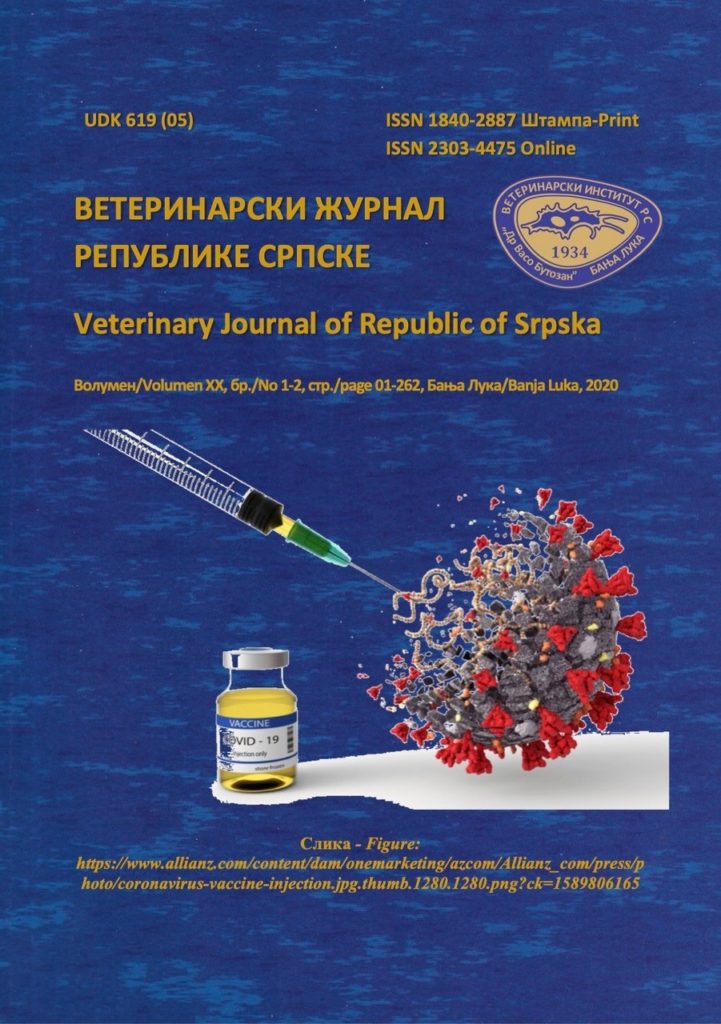MICROBIOLOGICAL SAFETY OF WATER IN PRIMARY PRODUCTION OF FOOD
DOI:
https://doi.org/10.7251/VETJEN2001066KAbstract
Health-safe water is the basis of a healthy life and is one of the priorities in primary health care. Water safety involves microbiological, physicochemical and radiologically clean water, a sufficient amount of water and continuous delivery.
Due to the great epidemiological importance of water, whose impact is immediate and through which various infectious diseases can be transmitted harmful and dangerous chemicals can be introduced, it is necessary, in order to protect human health, to control the safety of drinking water.
The aim of this study was to determine the microbiological safety of water used for watering animals, as well as in the food industry.
Based on data collected from year 2015 to 2017, 26.20% water samples did not meet requirements defined by Regulation on hygienic quality of drinking water. The greatest number of samples was unsatisfactory due to an increased number of microorganisms at the temperatures of 22°C (63.40%) and 37°C (54.90%), and when it comes to pathogenic microorganisms due to the presence of intestinal enterococci (58.80%).
The lowest risk of the presence of coliforms and E. coli is in the water from the water supplying network, while it's much higher presence is in wells and in the water from the wellspring. The presence of intestinal enterococci is significant in all three types of drinking water, while the presence of sulphite-reducing clostridia was observed only in the wellspring water.

